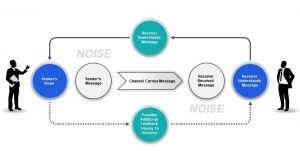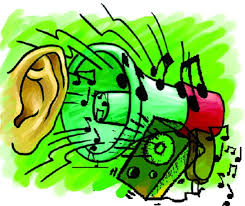As a preamble to sharing on education, it is important to understand that it falls in the docket of communication. With this therefore, a prior understanding of the famous process of communication comes in handy, as we seek to understand the link between this concept and education.
Communication is a process that is elaborated by the following figure.

Adopted from Shannon & Weaver
Education is a message that is passed from the educator to the learner. The educator may be the teacher in primary or secondary school, or even the lecturer at university. The educator could also be the author, play-write or even the poet and song writer. It may also be the actor in the video. All these have a message that they desire to pass to the learner, who in turn hopefully has the desire to acquire/receive the message. In so doing, different channels are chosen. The diagram points to audio and visual channels.
As soon as the receiver gets the message, there is an eliciting of feedback. This is another message that in turn is encoded by the receiver who then becomes the new message sender. Like the earlier sender, this second one also chooses a channel or medium of message transmission. In the case of the learner, the feedback may be immediate through nonverbal cues or head nods as well as gestures that communicate understanding or non-understanding or even misunderstanding the message. Later during assignments, the learner gives feedback to the educator that also shows how much as well as how the message was understood. This feedback also tests on the retention as well as the ability to interpret, on the part of the learner.
As the process is taking place, there is noise. The noise is at the first process interfering with the first sender’s message. It is also at the feedback level, interfering with the second sender’s message.
Noise is divided into internal and external.
Internal noise includes thoughts that are in the mind of the sender and also in the mind of the receiver. If for example the educator doubts whether the learners will understand, or even doubts the learners’ capacities to get the language use, the message may be affected and the channel too. In these instances, the passage of the message will surely be affected. The same case happens when the learner is giving feedback. In addition to the thoughts, emotions such as anxiety and fear may also influence. Other aspects that fall under the inner noise include bodily discomfort caused by pain, hunger, and even fatigue. All these influence the sending of the message and are looked at as noise. 
There is also noise emanating from external factors. These include lighting, auditory noise, smell, and even temperatures. When the room has too much light, mainly artificial, the student’s vision may be affected. A similar case happens when the room is too noisy. The factor influences the concentration of the learner. In addition to the two, if the study place is infested by strong smell/scent. The learner’s concentration is affected. Lastly, if the room’s temperature is either too low or too high, the discomfort generated, becomes noise to the learner. All these external factors influence the passage as well as the reception of the message. They are noise.
Finally, as part of the noise, time plays a role. When a learner best assimilates in the evening morning reading may present itself as noise. The same case applies to learners whose best assimilation is in the morning. These factors may easily be ignored. Also the acquisition abilities of the learners are determined by whether the learner is auditory (acquires best through hearing), visual (acquires best through seeing), kinesthetic (acquires best through movements), or whether one is an amalgam of any two of the above. This means that prior understanding of the type of learner is also core in affecting message sending and reception.
As the learner reflects on how to maximise on their studies, a look at the ambiance is hence important. The ambiance considered at this level is both that which is within and that which is without the learner. A careful consideration of all these, shall go a long way in helping the learner enjoy the process, but also maximise on one’s assimilation.


